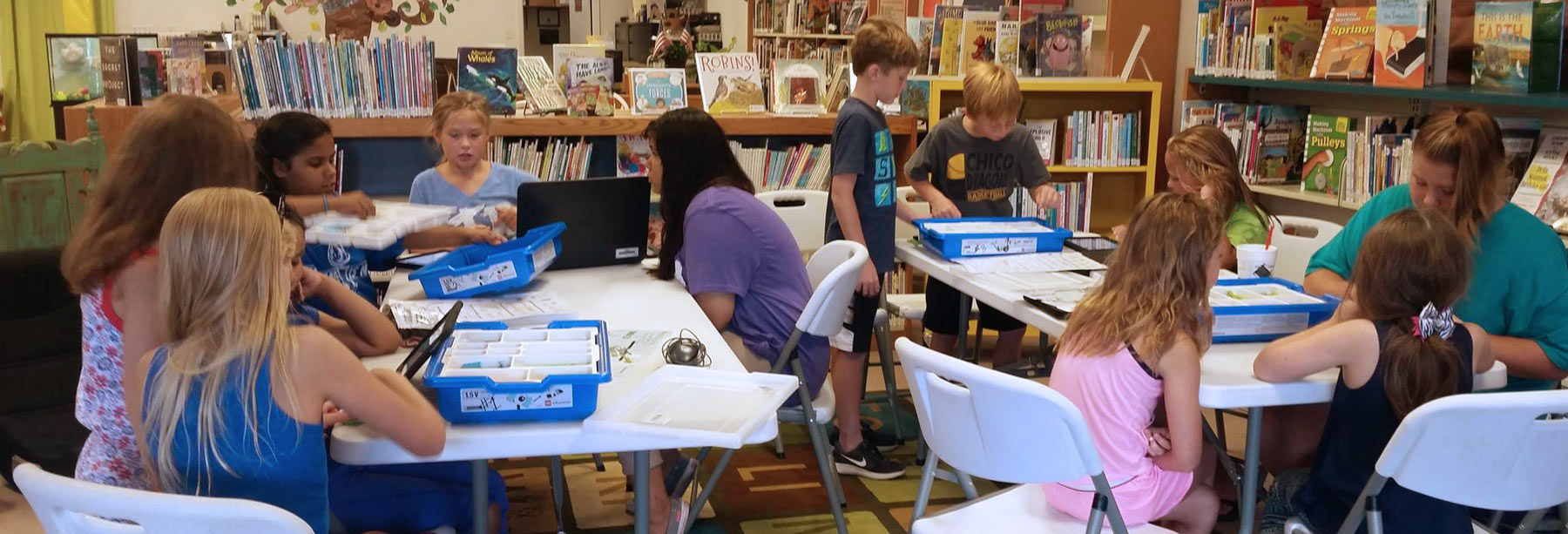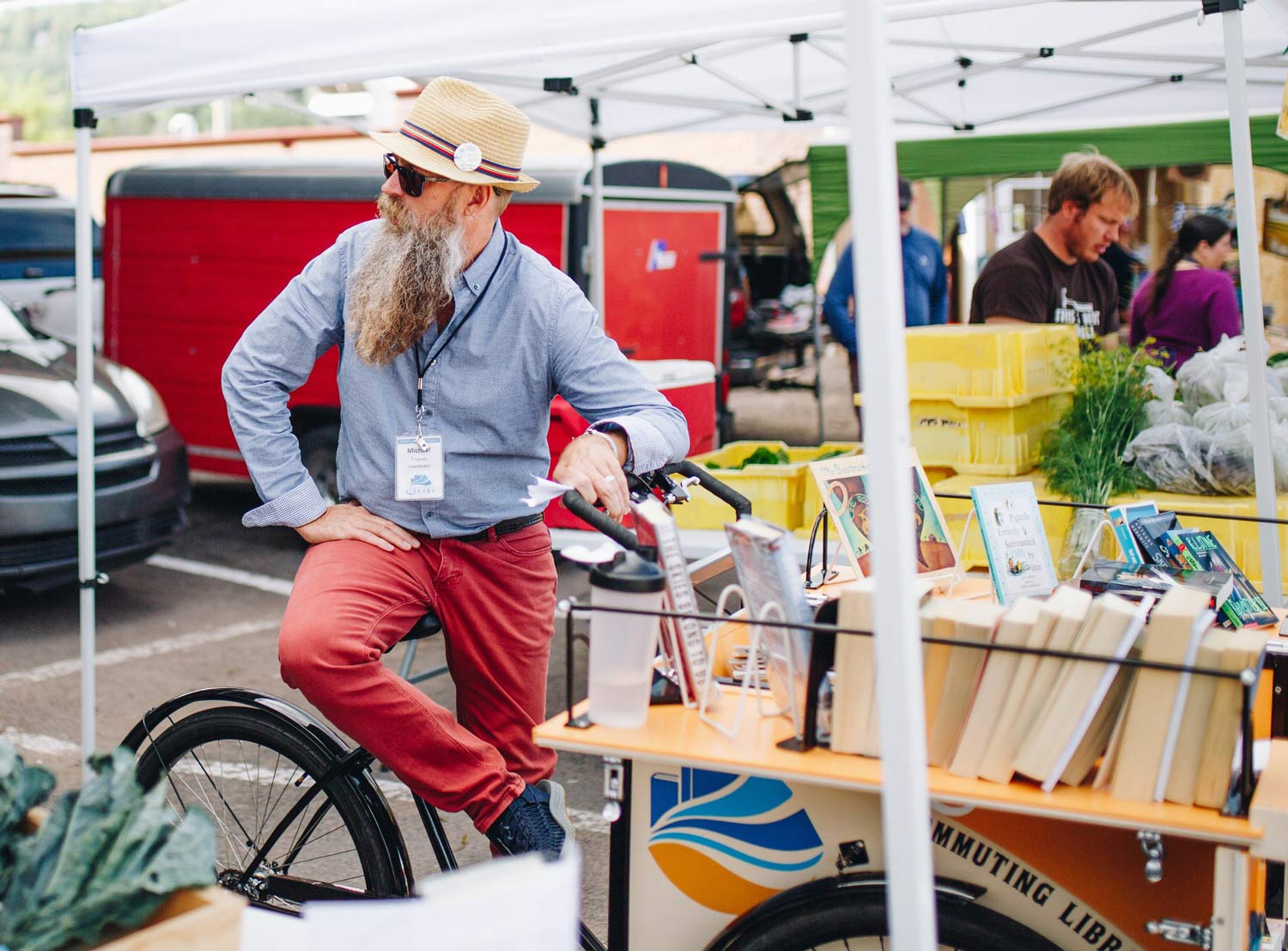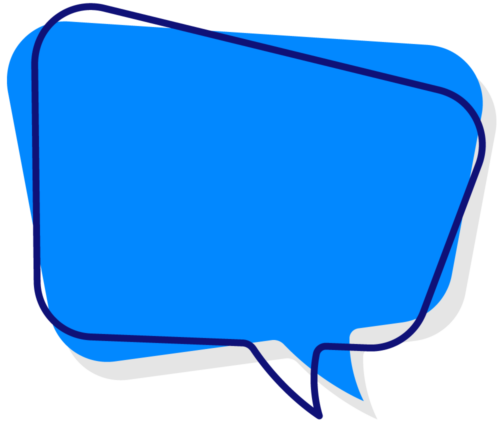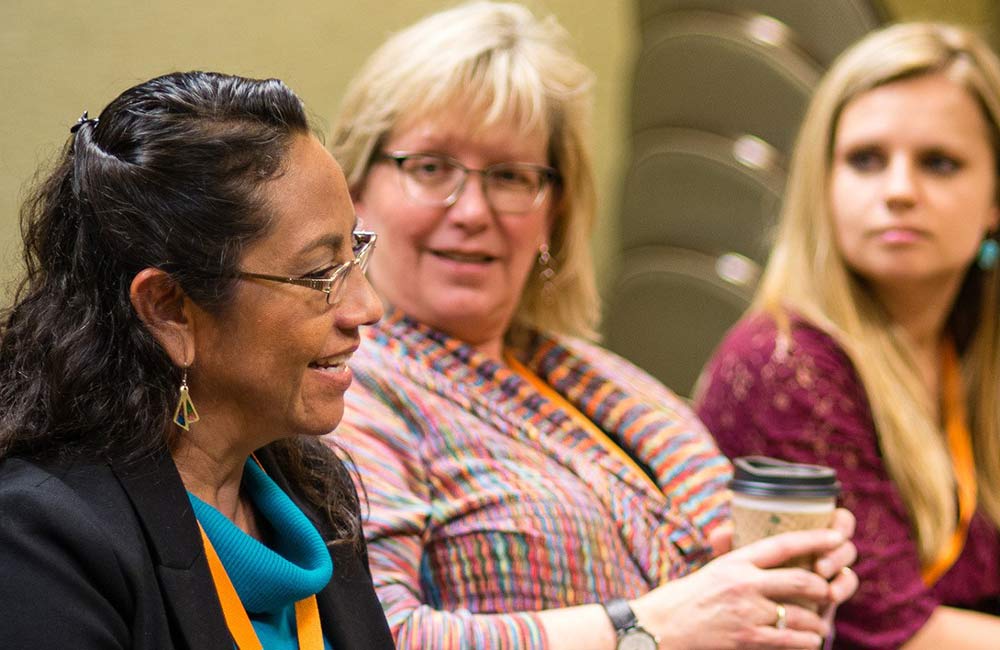
Guide to Building Support for Your Rural Library
Steps to success
There are many unique pleasures and challenges serving in a rural library. Securing support; however, is an ongoing challenge for libraries of any size. It can seem particularly daunting in small and rural communities with many needs and few resources. But small can be powerful when making your case for support.
Advocacy is about persuading funders and other decision-makers to give you the support you need. It begins with the people who believe in libraries—you, your staff, board members, friends, volunteers and users. Making your case for support is all about getting organized and focused. The best way to do that is to keep it simple.
Make yourself essential
Advocacy works best when the library has a track record of excellent service and a reservoir of goodwill with the community. You may not have the nicest building or biggest collection, but you can become renowned for your excellent service. Learn to speak the language of those you seek to serve.
Sponsor literacy, employment, and other classes that address community needs.

Build your team
The library supports, and needs the support of, the community it serves. Start building your team with the more recognizable and enthusiastic fans of the library such as your library’s trustees, or friends group. But don’t stop there. Research shows that even people who don’t use the library appreciate its role and wish to support it. Expand your relationships to partner with people and organizations wherever you can.
Consider people who are well-connected in the community, perhaps local schools, colleges, the chamber of commerce or various civic groups and afterschool organizations.
Try to reach out to many people and organizations from your community as you are able.
Always remember to ask for support.
Have a clear, memorable message
When asking for support, you will need a simple, powerful message that is easy to remember and share. This message could be your library’s strategic plan, mission statement, or current goal you are working to achieve. Develop two or three talking points and a few good statistics, or stories or examples to build your case.
Have an “elevator” speech that you have practiced and can deliver comfortably to any audience. To prepare for a variety of situations, consider having a two, five, and ten-minute version of your speech since you never know when an opportunity to build connections and share your message may arise!
Use your message consistently in publicity materials and presentations. The more you use it, the more likely people will “get it” and act.
Example messages
“Passing this levy will help the library to be open more hours to better serve our community.”
“Kids need libraries as much as they need school—both are essential to a quality education.”
Target your audiences
Be specific
- Who needs to hear the message?
- To whom do they listen?
- How does your message impact them?
It’s hard to reach everyone, so identify those whose support is most critical and make them your highest priority.
Key public officials, parents, and seniors are typical target audiences for libraries.
Consider who funds your library. It is important to know and cultivate a strong, communicative, and positive relationship with whoever holds the purse strings.
Let them know what the library can do for them, how the library will help them, and what they, in turn, can do to help the library.
Crafting your message
The message
“We need the levy to pass so we can have more open hours.”
Approaching families
“If the levy passes, we can be open more hours and that will give kids greater access to materials they need for schoolwork.”
Approaching businesses
“If the levy passes, we will have more open hours so entrepreneurs can have increased access to a free WIFI internet connection.”
Identify strategies
- How will you deliver your message to the people you want to reach?
- Who will deliver it?
Your action plan should identify specific strategies, a timetable, and who is responsible. The more times and the more ways you deliver the message the more impact it will have.

Practicing word-of-mouth marketing
Good old-fashioned word-of-mouth is still the most powerful form of communication. But to be effective, it needs to be done consciously and consistently. And it is most effective when others also share it.
Don’t just tell people the message; ask them to “Please tell your friends.”

Have enthusiastic, articulate spokespeople!
It is important that everyone at the library knows the library’s mission and message, and advocates for it.
In addition, you can identify particularly articulate and passionate spokespeople who are comfortable and skilled in that role. That may or may not be you. While you know the library best, it is often helpful to have a supporter be the front person at times.
Consider having teens, parents, local businesspeople, or other users of the library share the library message.
Evaluate constantly
Don’t wait until it’s over. Keep an eye out for what’s working and what’s not. Always ask yourself the following:
- Are you getting positive media coverage?
- To how many groups have you spoken?
- What kind of feedback are you getting from people who come into the library?
Whenever you have the opportunity, ask representatives of your target groups whether they know about your campaign. Also, keep a checklist and make adjustments as needed.
Don't stop
Make an ongoing effort to keep your community informed of how the library contributes to the community and what it needs to provide the best possible service.
It is much easier to win support when key officials and community members understand its importance and are enthusiastic.
Go where the people are
Every library—no matter how small—has many opportunities to deliver its message. Posters, bookmarks, and flyers are great publicity tools, but too often they end up sitting inside the library. Consider these venues and opportunities the next time you want to share your message:
- Grocery store Co-op
- Community meetings and events
- Church bulletins
- Football/other sports programs Parades
- Rallies County fairs
- Community/tribal celebrations
- Parks/recreation centers Schools
- Doctors’ offices
- Restaurants and coffee shops

If your library has a bookmobile, you can use it as your very own traveling roadshow. Home delivery is another prime opportunity to deliver your message one-on-one.
Volunteers may also go door-to-door to distribute materials, collect signatures and enlist other support.
Win friends and influence decision-makers
The library must make its case like anyone else.
Your goal: make it easy for them to understand and support the library.
- Attend meetings. Provide brief monthly or quarterly reports. Call or drop by to chat. Be clear about what you are asking. Link the library’s message to their concerns, e.g. poverty, economic development, technology, preservation of Native cultures.
- Represent the library by serving on the board of other community organizations, or participating in other committees. Be out and involved in the community, building relationships.
- Talk about the library. It’s successes and possibilities, as well as its needs. Provide fact sheets or other handouts.
Elected officials listen when voters speak. Get your supporters to speak out at meetings, budget hearings, and church and community meetings.
If there is a specific issue or request you would like them to address on the library’s behalf, you may want to consider creating a form email or letter with your message that includes the representative’s contact information. Also encourage them to send brief letters based on their own needs and experiences.
Invite decision-makers to the library so they can see for themselves how well used it is, what you do, and what the needs are.
Arrange for them to tour other libraries so they can see the possibilities.
- Keep them informed. Maintain a VIP list and widely distribute the library’s newsletter, annual report, and other items of special interest.
- Thank people in person, in writing and, in public whenever possible.
- Follow-up. If they gave you support, let them know what happened with their support. For instance, send people who donated to the Summer Reading programs stories and statistics from the program once it is over. If teachers let you come speak to classes about library cards, let them know how many students came by later to get library cards. Find ways to stay in contact besides asking for things. Ask if you can help them, and congratulate other organizations when they succeed.
- Stay on good terms. Even if they don’t support you this time, they may the next time.
Advocate
You don’t need to be a great speaker, but you do need to be convincing. Whether you are speaking to an elected official or in front of your Friends of the Library group, remember that they are people too, with families and constituents who look to them for leadership. Also remember that you are on an important mission, not just for the library, but for everyone who depends on it and could potentially benefit from library services.
Advocacy is about persuasion. To be successful, you need to touch hearts as well as minds. The best way to do that is to speak sincerely and with passion. Sharing your enthusiasm will spark theirs. Be prepared to deliver your key message and a call to action, e.g., “I urge you to approve this very important funding,” or, “Please tell your friends and neighbors that the library needs their support.”
Share real-life stories and testimonials that your audience can relate to. Focus on community needs. Use examples that your audience understands, e.g., seniors need large-print books, students need more computers, community groups need a place to meet.
Paint a positive picture. Talk about the library’s successes, not only its needs. Focus on benefits more than problems.
Open strong and end strong. Look out at your audience and remember to smile. Be brief, 10 minutes max plus questions.
Take questions. Be comfortable waiting for questions, it takes time for people to gather their thoughts. If you don’t know the answer, get the asker’s contact information, find out, and reconnect with them.
Have different versions of your “elevator speech” both shorter and longer, so you will have time and can share whenever the opportunity arises.
Make the most of media in all of its forms
Newspapers, radio, and TV outlets may be few and far between where you live. If so, you will need to look for other opportunities such as newsletters (print and electronic) published by schools, local governments, religious and community groups.
If you do have local media, don’t hesitate to approach them. Many newspapers with small staff welcome news items and columns that you write. Local talk shows may be looking for topics of interest to discuss. Remember that even very small publications/stations take their role seriously.
Whatever you can do to make their job easier will make your job easier.
Start by asking them questions. What kinds of stories are they looking for? When is their deadline? Do they prefer hard copy or email?
Expect to be asked hard questions, especially if money is involved. Be prepared to answer and don’t take it personally.
Be prepared to give “sound bites” or “quotable quotes” that make your point along with examples and statistics.
Learn how to write a good, basic news release starting with the most important information and ending with the least. Use simple sentences and keep it brief. Take advantage of letters to the editor and guest columns to make your case. Feel free to suggest feature stories about various services, perhaps on a quarterly basis. You may even be asked to write them.
Send public service announcements to your local radio station. These brief announcements (about 70 words) are aired free of charge for nonprofit organizations.
Provide ideas for local columnists (“Did you know you can get audio books, for free, at the library?”) or consider writing your own column.
Remember to thank your contacts, especially for coverage that is above and beyond.
Build powerful partnerships
Newspapers, radio and TV outlets may be few and far between where you live. If so, you will need to look for other opportunities such as newsletters (print and electronic) published by schools, local governments, religious and community groups.
If you do have local media, don’t hesitate to approach them. Many newspapers with small staff welcome news items and columns that you write. Local talk shows may be looking for topics of interest to discuss. Remember that even very small publications/stations take their role seriously.
Whatever you can do to make their job easier will make your job easier.
Encourage their members to join in sending letters, testifying before public officials, giving money or other support.
Identify potential partners. Which have goals compatible with yours? Which represent audiences you want to reach?
Pick up the phone. Ask your contact to lunch or coffee.
Explain what you are trying to accomplish and ask for advice. Be clear about what kind of support you are seeking. Listen.
Provide a fact sheet or other background materials. Ask what you need to do to move your request along and follow through.
Be sure to provide updates, thank them and recognize them for their support. Use the young people to share library stories!
Tools for success
Annual report
An annual report provides comprehensive information on an organization’s activities throughout the preceding year. Annual reports provide community leaders and other interested people with information about the library’s activities and performance. It should be brief, attractive and reinforce the library’s key message. Make sure it gets into the hands of funders and other key stakeholders.
Business card
Don’t forget the obvious. Be sure to include the library’s website and hours. Give it out as often as you can.
Communication plan
A plan will help you get a bigger bang for your buck. Elements include goals, objectives, positioning, key messages, target audiences, strategies for delivering the message and evaluation.
Fact sheet
A good way to present key points quickly. Keep narrative to a minimum. Use bullets to highlight key facts/statistics. Shorter is better—no more than two pages. Use with public officials, community groups, reporters or anyone who wants information fast.
News release
Newspapers and other media welcome a well written news release and will often run it “as is.” Start with the most important information and end with the least. Be sure to cover the 5Ws (Who, What, When, Where, Why)—and H (How). Keep it short— one page if possible.
Public service announcement
Free space for ads may be available from local newspapers and radio stations. Ask about availability and guidelines.
Website and blog
Websites and blogs can be useful tools for providing timely information, especially to those who might not come into the library. It is important is to keep them simple and current.
Technology as an advocacy tool
Technology, especially social media, have significantly changed organizations’ abilities to connect with members of their communities. Listed below are strategies for utilizing technology for the benefit of the library.
Website
Perhaps one of the most basic but useful technology tools for libraries is a basic library website. In addition to providing access to collections, information on upcoming programs, and directions to the library, the website can serve as a link to other social media platforms (like Facebook, Twitter, and YouTube.) The essentials for any website—a phone number, address, contact names (with phone numbers and e-mail addresses where applicable), a calendar of events, a list of services, and hours of operation.
For some small libraries, simple is not only better, but it’s also essential. For a simple but effective library website, consider WordPress to create a library blog that can be enhanced to create a more robust site for your library. WordPress is easy to update and can be enhanced with plugins for a calendar, submit a question form, request a book form, and more. WordPress can even incorporate content from libraries’ Facebook and Twitter accounts.
Content you may consider for your library’s website includes:
- Book recommendations from staff
- Calendar of events
- Links to library newsletters
- Blog posts on upcoming celebrations
(ie: Pride Month, Black History Month, etc) - Hours of operation; address
- Contact form
- Staff information page
- Welcome from library director
Social media
Social media platforms come and go and there are new ones every day! Additionally, not all people use all platforms. For instance, when it started Facebook was primarily used by college-aged users, but by the mid-2010s there were more middle-aged users on Facebook and young adults had moved on to other platforms. With so many different social media accounts out there, how do you know which to use, which to ignore?
The important thing is finding out what social media platforms your community uses, and then using those. Additionally, know and make peace with the fact that this will continue to change. You may have a vibrant account on one social media platform, but if it becomes less popular, don’t be afraid to pull the plug on it and move to whatever platform has replaced it in usage and popularity.
Here are some tips for using social media as a library
- If you choose to use multiple social media platforms, make sure you are sharing different content and not duplicating content.
- Post content that your users may be interested in, not all posts have to be library-specific. It is recommended that social media content is 80% related to the interests of users and 20% should be active promotion.
- X (formerly Twitter) allows you to schedule your posts in advance. Have an image or graphic accompany posts.
Tools to use
Data you can use
Here is an annotated list of further resources you can use to garner support for your library:
Keeping Up With…Small and Rural Libraries
All libraries, including small and rural libraries, have challenges and concerns. This article examines some of the problems facing small and rural libraries, suggests some methods for meeting those challenges, and discusses the importance of keeping up with library developments in these institutions. Issues discussed include staffing, funding, professional development, resources, and leadership. Also included is a list of additional resources.
More significant than ever, public libraries are continually changing and transforming to meet the needs of the communities they serve. Included in the article are statistics (2007-2015) showing how library usage has evolved over the years and a Pew Research Report (2013) on “How Americans Value Public Libraries in their Communities.” This blog post, by Erin Allen, from the Library of Congress Blog, May 5, 2016, is based on the cover story from the May/June 2016 issue of the Library of Congress Magazine, LCM. The original article was written by Yvonne Dooley, reference librarian in the Science, Technology and Business Division and president of the D.C. Library Association.
The State of America’s Libraries
This report, issued annually since 2006 during National Library Week by the American Library Association Public Awareness Office, in conjunction with other ALA offices, serves to educate the public about important trends and significant issues confronting America’s libraries. Archives to earlier reports can be found here, as well.
Institute of Museum and Library Services
The mission is the IMLS is to inspire libraries and museums to advance innovation, lifelong learning, and cultural and civic engagement. A search for “Rural Libraries” on the IMLS site provides articles, research briefs, and state by state current and cumulative data about the impact of libraries in rural communities.
Launched in 2003 as a program of OCLC Research, WebJunction is free and accessible 24/7. As well as creating and providing training for library staff, WebJunction “designs and delivers transformational programs that connect public library service to community needs such as lifelong learning, health and wellness, and economic success.”
Lights, Camera, Advocacy: Digital Storytelling for Your Library
How can you tell your library’s story to increase public support? Develop a compelling story for your library, and leverage it to show your impact in the community. This presentation archive includes list of technology tools to develop top-notch video-based stories. Created by Crystal Schimpf (Library Consultant, Kixal) & Ginny Mies (Senior Content Manager, TechSoup for Libraries) Presented at the Association for Rural and Small Libraries Conference in Fargo, North Dakota, October 28-29, 2016.